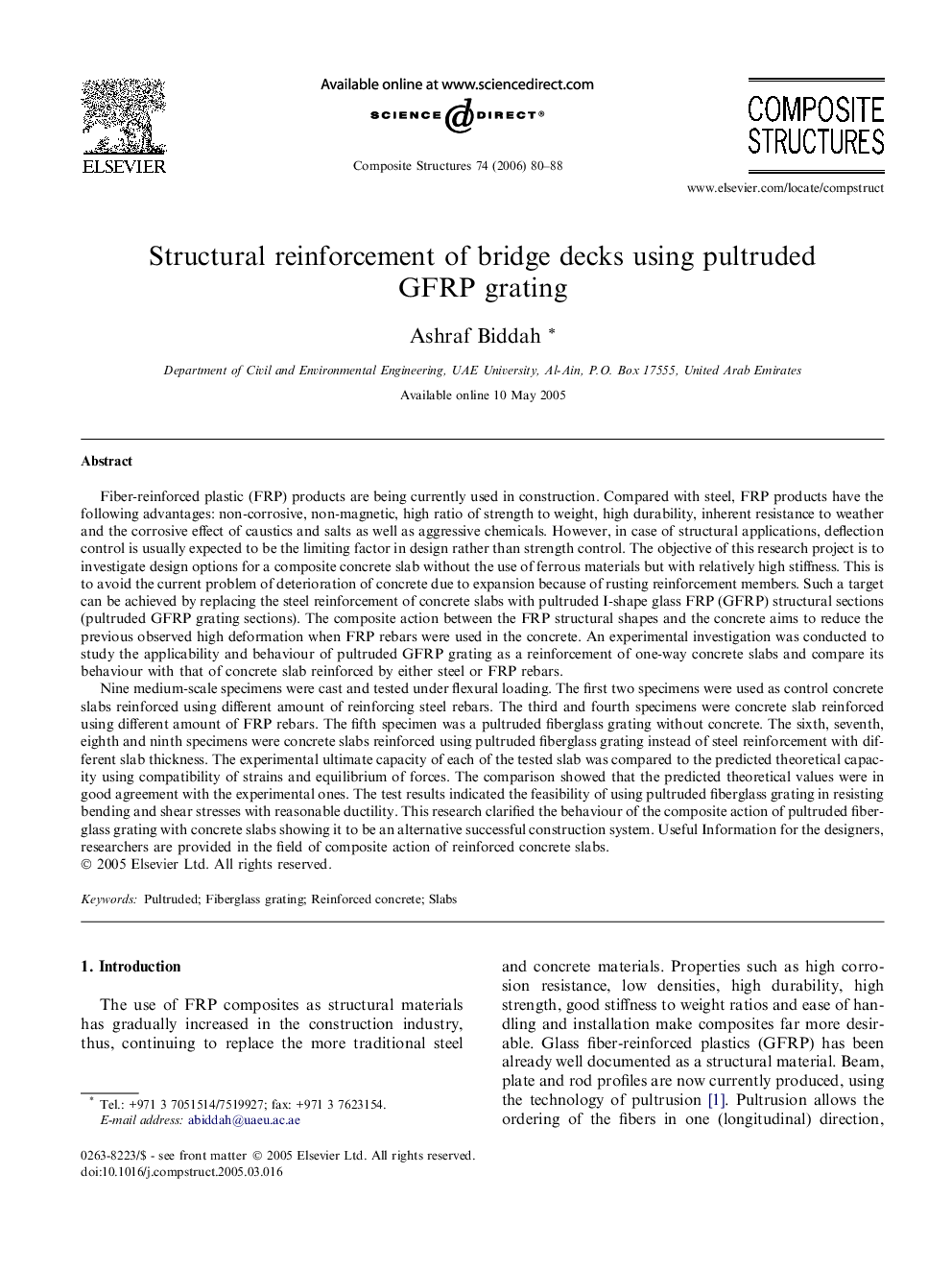| Article ID | Journal | Published Year | Pages | File Type |
|---|---|---|---|---|
| 254473 | Composite Structures | 2006 | 9 Pages |
Fiber-reinforced plastic (FRP) products are being currently used in construction. Compared with steel, FRP products have the following advantages: non-corrosive, non-magnetic, high ratio of strength to weight, high durability, inherent resistance to weather and the corrosive effect of caustics and salts as well as aggressive chemicals. However, in case of structural applications, deflection control is usually expected to be the limiting factor in design rather than strength control. The objective of this research project is to investigate design options for a composite concrete slab without the use of ferrous materials but with relatively high stiffness. This is to avoid the current problem of deterioration of concrete due to expansion because of rusting reinforcement members. Such a target can be achieved by replacing the steel reinforcement of concrete slabs with pultruded I-shape glass FRP (GFRP) structural sections (pultruded GFRP grating sections). The composite action between the FRP structural shapes and the concrete aims to reduce the previous observed high deformation when FRP rebars were used in the concrete. An experimental investigation was conducted to study the applicability and behaviour of pultruded GFRP grating as a reinforcement of one-way concrete slabs and compare its behaviour with that of concrete slab reinforced by either steel or FRP rebars.Nine medium-scale specimens were cast and tested under flexural loading. The first two specimens were used as control concrete slabs reinforced using different amount of reinforcing steel rebars. The third and fourth specimens were concrete slab reinforced using different amount of FRP rebars. The fifth specimen was a pultruded fiberglass grating without concrete. The sixth, seventh, eighth and ninth specimens were concrete slabs reinforced using pultruded fiberglass grating instead of steel reinforcement with different slab thickness. The experimental ultimate capacity of each of the tested slab was compared to the predicted theoretical capacity using compatibility of strains and equilibrium of forces. The comparison showed that the predicted theoretical values were in good agreement with the experimental ones. The test results indicated the feasibility of using pultruded fiberglass grating in resisting bending and shear stresses with reasonable ductility. This research clarified the behaviour of the composite action of pultruded fiberglass grating with concrete slabs showing it to be an alternative successful construction system. Useful Information for the designers, researchers are provided in the field of composite action of reinforced concrete slabs.
